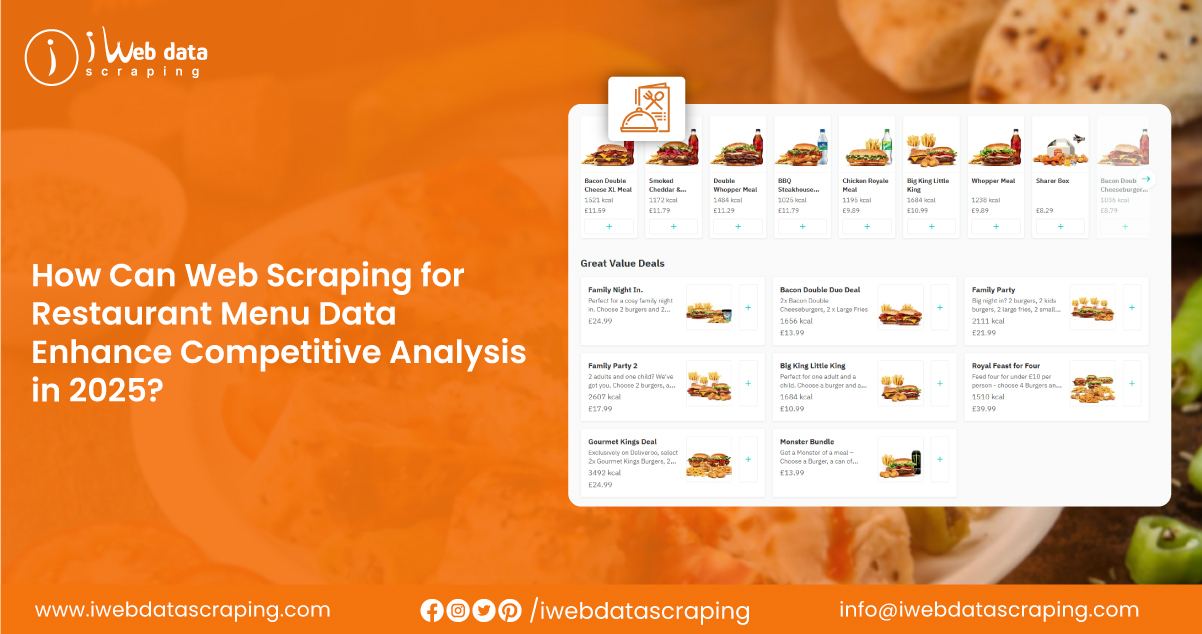
The food industry landscape is rapidly evolving, driven by increasing consumer expectations, dynamic pricing strategies, and technological advancements. As businesses aim to stay ahead of the competition, the ability to gather, analyze, and interpret vast amounts of data is becoming more critical than ever. In this context, food data scraping is emerging as an indispensable tool for companies looking to stay competitive in 2025 and beyond. This article explores the importance of food data scraping for competitive market analysis, shedding light on its benefits, the impact of market trends, and why it is becoming increasingly essential for businesses operating in the food sector.
Data collection is crucial, with tools like Restaurant Menu Scraper enabling businesses to extract valuable insights from digital restaurant menus. This lets companies stay updated on competitor offerings, pricing strategies, and promotional activities. As the food industry becomes more competitive, businesses increasingly rely on Web Scraping for Restaurant Menu Data to analyze menu trends, detect shifts in consumer preferences, and optimize their product offerings to meet evolving demands. This real-time data provides a strategic advantage, allowing agile decision-making in a dynamic market.
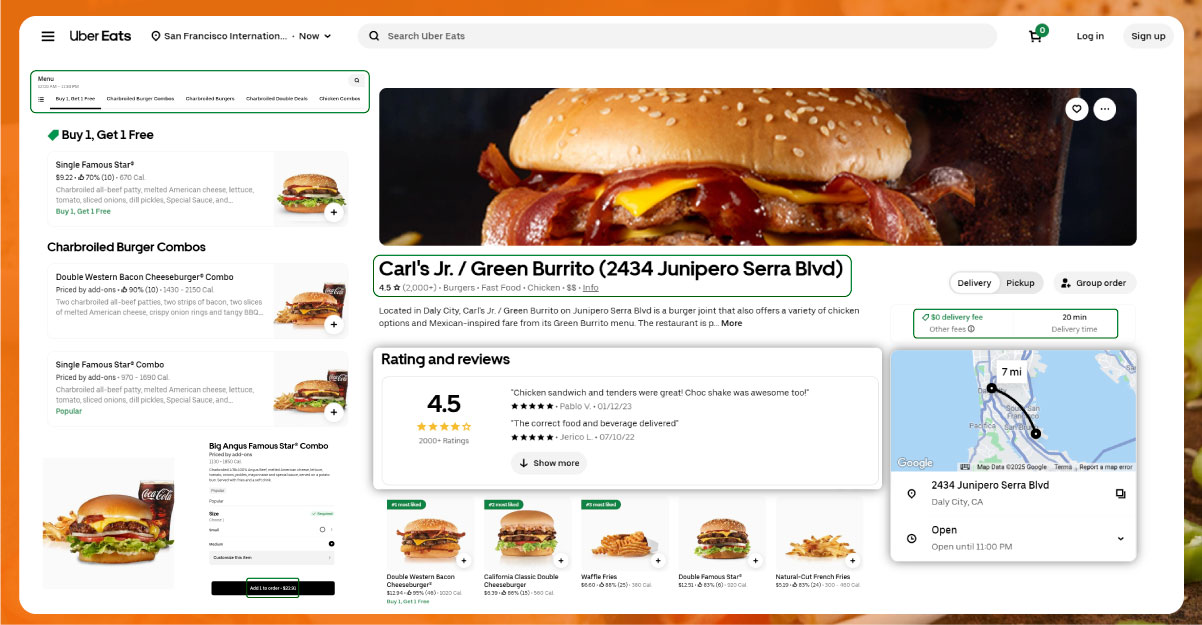
Food data scraping refers to the automated extraction of data related to food products from various digital sources such as online platforms, e-commerce websites, food delivery apps, and social media channels. This data can include valuable insights, including pricing, product availability, menu items, customer reviews, and competitor activities. By utilizing advanced scraping tools and algorithms, businesses can gather structured and unstructured data from various online sources, enabling them to perform in-depth market analysis.
The significance of food data scraping lies in its ability to provide real-time, actionable insights from massive datasets. This allows companies to track shifts in market trends, identify emerging consumer preferences, and monitor competitors' strategies. Tools that allow businesses to Scrape Restaurant Menu Prices help them keep track of competitor offerings and pricing changes, which is essential for staying competitive in the food industry. As the digitalization of the food industry continues to accelerate, the reliance on data scraping will grow as companies seek ways to gain a competitive edge. Leveraging Real-Time Restaurant Menu Scraping Tools ensures businesses can capture the most up-to-date information, enabling quick decisions based on market conditions.
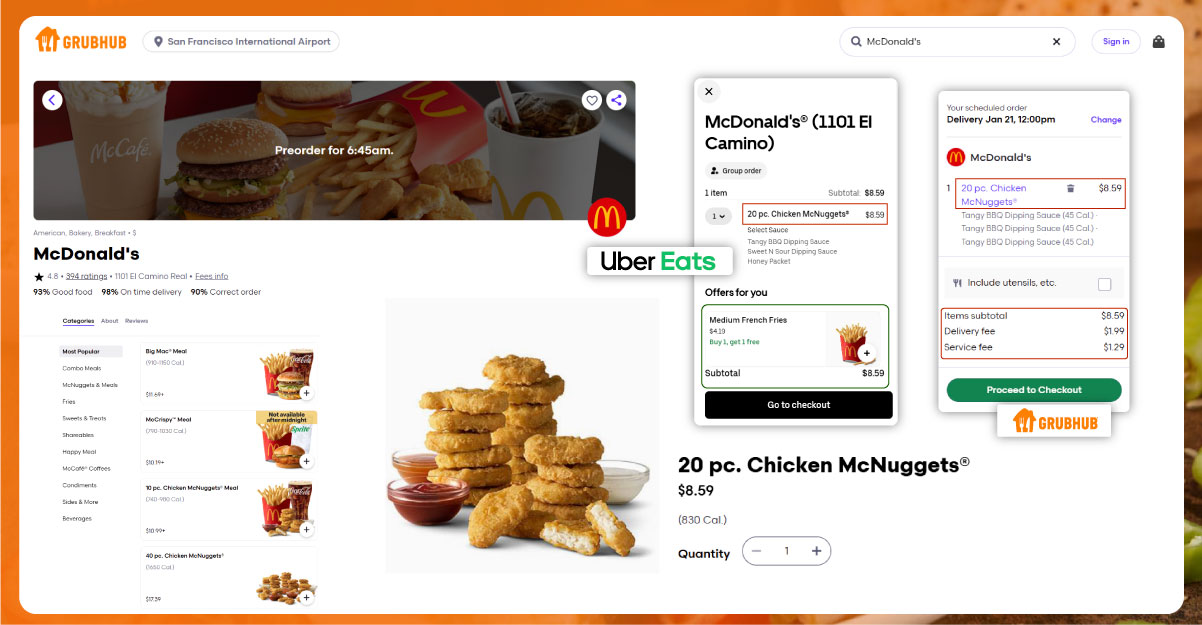
Competitive market analysis is a crucial process for companies in the food industry to understand the competitive landscape and make informed decisions. It helps businesses identify their strengths and weaknesses compared to competitors, track industry trends, and predict future market developments. As food businesses strive for market share, they need to gain a comprehensive understanding of consumer preferences, pricing strategies, and product offerings within their segment.
In 2025, market dynamics in the food industry will become even more complex with the rise of digital-first consumer behavior, on-demand food delivery services, and the increasing focus on sustainability and health-conscious eating. Traditional competitive analysis methods, such as surveys and focus groups, will not be sufficient to keep up with the pace of change. This is where food data scraping comes in, offering a more efficient, scalable, and real-time solution to monitor and analyze competitors and market trends. Restaurant Menu Data Scraping Services are particularly valuable in this context, providing businesses with up-to-date insights from competitors' menus and allowing for real-time comparisons. Additionally, businesses can leverage Restaurant Menu Datasets to gain access to historical and current menu information, enabling deeper trend analysis and better strategic planning.
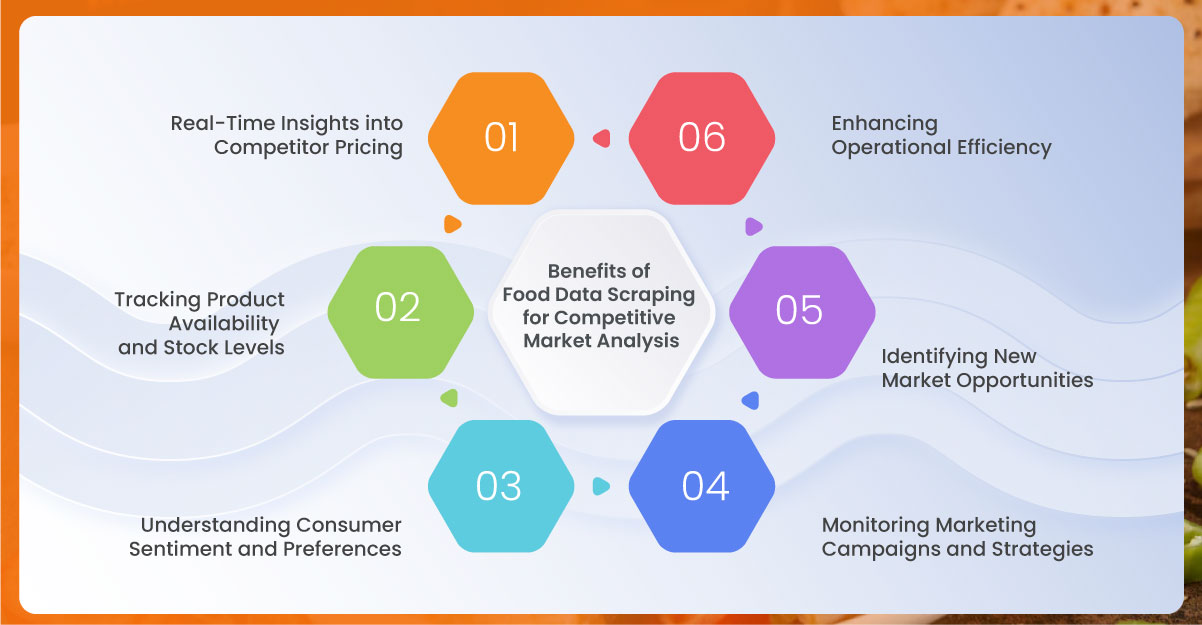
Food data scraping offers businesses a competitive edge by providing real-time insights into pricing, menu trends, customer preferences, and competitor strategies. This valuable data empowers companies to make informed decisions, optimize their offerings, and stay ahead in a dynamic market.
Real-Time Insights into Competitor Pricing
One of the most immediate benefits of food data scraping is its ability to track competitor pricing strategies. In the highly competitive food industry, prices fluctuate regularly due to supply chain disruptions, seasonal demand, or promotional offers. Businesses can monitor real- time pricing trends by scraping pricing data from competitor websites or food delivery apps.
This allows them to quickly adjust their pricing strategies to remain competitive or take advantage of pricing gaps in the market.
Moreover, food data scraping can provide insights into competitor discounts, loyalty programs, and seasonal promotions. By understanding when and why competitors offer price reductions, businesses can tailor their promotions to maximize profitability while maintaining customer satisfaction.
Tracking Product Availability and Stock Levels
Food data scraping also helps businesses track product availability and stock levels across online platforms. In 2025, consumer expectations around delivery speed and product availability are higher than ever. If a business fails to maintain sufficient stock levels or experiences frequent out-of-stock situations, it risks losing customers to more reliable competitors. Scraping data from e-commerce websites and food delivery apps can provide real- time information on product availability, enabling businesses to identify potential supply chain issues before they become critical.
Additionally, businesses can monitor how frequently competitors' products go out of stock, which could indicate supply chain weaknesses or shifts in consumer demand. This intelligence can help companies stay ahead of potential supply shortages and ensure they can always meet customer expectations.
Understanding Consumer Sentiment and Preferences
The growing importance of customer reviews and feedback in the food industry cannot be overstated. In 2025, consumers increasingly make purchase decisions based on online reviews, ratings, and social media discussions. Food data scraping can extract customer feedback from review sites, e-commerce platforms, and social media channels, providing businesses with insights into consumer sentiment.
Businesses can identify the strengths and weaknesses of their competitors' products and services by analyzing customer reviews. This data can also help businesses uncover emerging food trends, such as the rising demand for plant-based or organic products. For example, if there is an increase in positive reviews for vegan products on competitor websites, businesses can consider expanding their vegan offerings to capture that market segment. Furthermore, analyzing sentiment around specific menu items or product ingredients can help businesses tailor their offerings to align with consumer preferences. In a competitive market, businesses that stay attuned to customer feedback and adapt their product offerings accordingly are more likely to maintain customer loyalty and attract new customers.
Monitoring Marketing Campaigns and Strategies
Food data scraping also enables businesses to monitor their competitors' marketing efforts. By scraping promotional content, advertisements, and social media posts, companies can better understand how competitors are positioning themselves in the market. For instance, by analyzing competitor advertisements and product descriptions, businesses can determine what types of messaging resonate with consumers.
Furthermore, scraping data from food delivery apps and online marketplaces allows businesses to track which products are being promoted through paid ads, discounts, or bundles. By understanding how competitors market their products, businesses can identify gaps in their marketing strategies and develop more targeted campaigns that attract attention and drive sales.
Identifying New Market Opportunities
Another critical benefit of food data scraping for competitive market analysis is uncovering new market opportunities. By scraping data from various sources, businesses can identify emerging food trends, untapped consumer segments, and new product categories. For example, if data scraping reveals a growing interest in gluten-free or low-carb diets, businesses can explore expanding their offerings to include such products.
Moreover, by monitoring competitor actions, such as the introduction of new products or the expansion into new geographic regions, businesses can identify opportunities for growth and expansion. Early identification of new trends and opportunities allows companies to stay ahead of the competition and position themselves as leaders in emerging markets.
Enhancing Operational Efficiency
Data scraping tools can help food businesses enhance operational efficiency by providing accurate, up-to-date information. With access to real-time data on pricing, stock levels, and consumer sentiment, businesses can make faster, more informed decisions, reducing the time spent on manual data collection and analysis.
Automated data scraping allows businesses to scale their market analysis efforts without significantly increasing their resource allocation. This makes food data scraping an especially valuable tool for small and medium-sized businesses that may not have the resources to conduct traditional market research at scale.
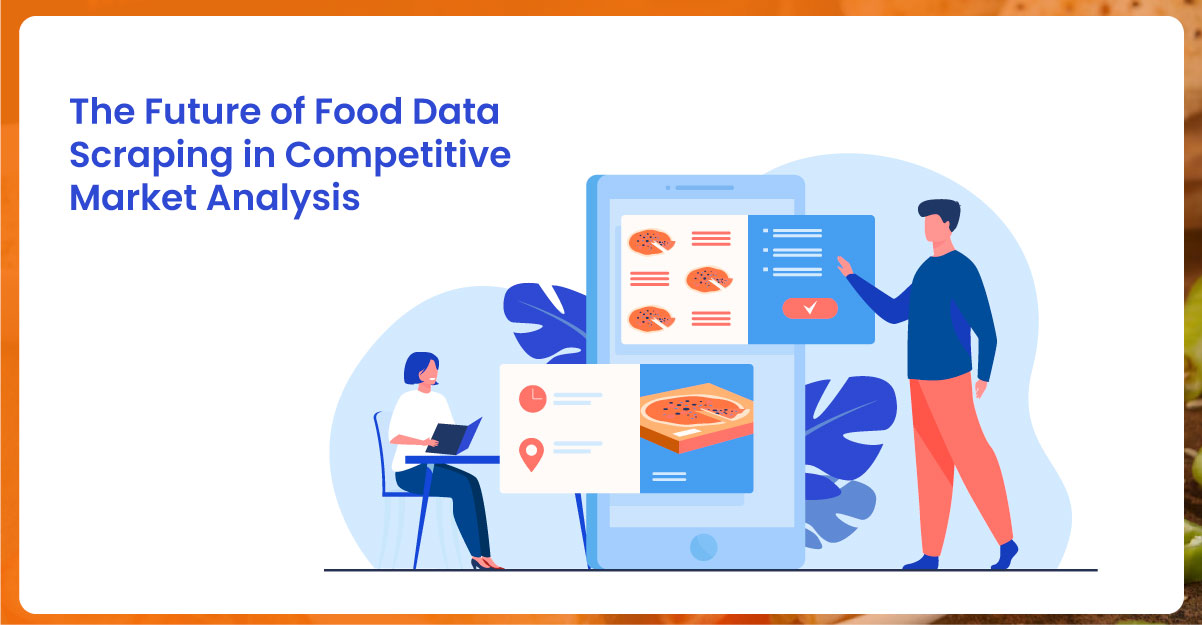
As the food industry continues to embrace digital transformation, the role of data scraping in competitive market analysis will only become more vital. In 2025, the rise of AI-driven analytics, machine learning models, and predictive algorithms will further enhance the value of scraped data, allowing businesses to monitor current market conditions and predict future trends with a higher degree of accuracy.
With the increasing adoption of Internet of Things (IoT) devices in food production, distribution, and retail, there will be an explosion of data sources available for scraping. Businesses that can effectively collect, analyze, and interpret this data will have a significant advantage over their competitors.
Furthermore, as privacy concerns and data protection regulations evolve, businesses must ensure that their data scraping practices comply with legal requirements. In the coming years, companies must balance leveraging data for competitive advantage and respecting consumer privacy rights.
Food data scraping is fast becoming an essential tool for competitive market analysis in 2025. By providing real-time insights into competitor pricing, product availability, consumer sentiment, and marketing strategies, businesses can gain a comprehensive understanding of the competitive landscape and make data-driven decisions. As the food industry continues to evolve, the ability to harness and analyze vast amounts of data will be a key differentiator for businesses looking to stay ahead of the competition.
Experience top-notch web scraping service and mobile app scraping solutions with iWeb Data Scraping. Our skilled team excels in extracting various data sets, including retail store locations and beyond. Connect with us today to learn how our customized services can address your unique project needs, delivering the highest efficiency and dependability for all your data requirements.